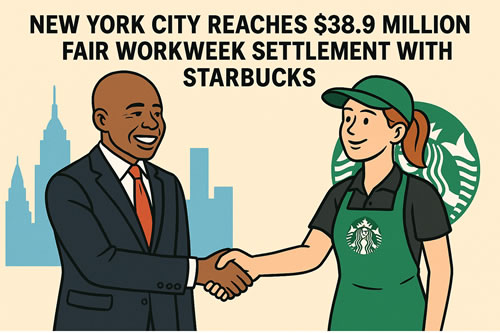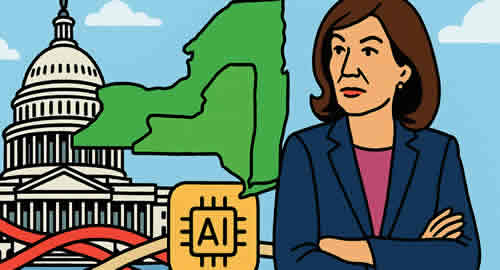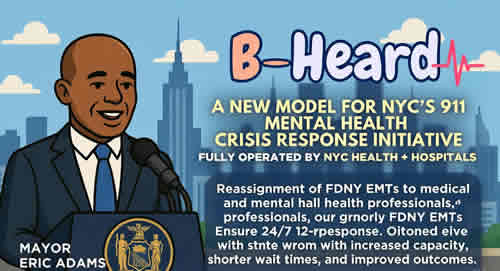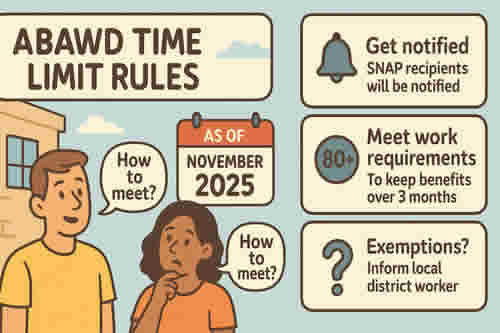New York City Mayor Eric Adams is marking the first anniversary of his “City of Yes for Housing Opportunity” zoning overhaul by touting a 22.8% rise in permitted housing units in 2025 compared with the year before the policy was approved, as well as a growing pipeline of affordable units and office-to-residential conversions. The package, billed as the most pro-housing legislation in city history, relaxes parking mandates, legalizes accessory dwelling units, creates new high-density districts and offers an affordability bonus that has attracted more than 100 projects expected to yield some 5,400 homes, including roughly 900 income-restricted units. New R11 and R12 zones in Midtown South and other locations could add nearly 11,000 homes, while conversions of underused office buildings are projected to produce more than 12,000 apartments, 3,000 of them permanently affordable. Combined with five neighborhood rezonings slated to deliver about 50,000 homes and what City Hall describes as record production of nearly 86,000 affordable units since Adams took office, the administration is seeking to cement its legacy as aggressively pro-development amid a long-running housing shortage.

NEW YORK – New York City Mayor Eric Adams and New York City Department of City Planning (DCP) Director Dan Garodnick today celebrated one year since the passage of “City of Yes for Housing Opportunity,” the most pro-housing legislation in the city’s history. In the first year since its passage, tools from City of Yes are already creating new housing across the five boroughs while housing permits have seen a significant year-to-year increase. In addition to proposing and passing City of Yes, the Adams administration has also passed five ambitious neighborhood plans; produced historic amounts of affordable housing; secured a landmark deal in Albany to give the city new tools to build housing; convened a historic Charter Revision Commission focused on land-use and housing; and much more to build more affordable housing across the five boroughs.
“One year ago today, our city said ‘yes’ to more housing and a more affordable future for working-class New Yorkers. We turned the page on decades of half-measures and proved that government can still meet the challenges of our time with energy, ambition, and resolve,” said Mayor Adams. “One year later, we are already seeing the results, with thousands of new affordable homes in the pipeline across our city. Whether it’s passing the first citywide rezoning in six decades, investing historic amounts of money into new homes, or creating record amounts of affordable housing, we are proud to be the most pro-housing administration in city history.
“With the adoption of City of Yes for Housing Opportunity, we have begun to turn the tide on the housing crisis in New York City. The full impact of these changes will take time to be felt, but twelve months in, we’re already seeing success delivering a little more housing in every neighborhood,” said DCP Director Garodnick. “New York City’s housing crisis has been growing for so long that it is easy to take it for granted. But with City of Yes and other policy changes, we are changing course and creating a more affordable city for generations to come.”
The initiative — which was approved by the New York City Council on December 5, 2024 — aims to deliver “a little more housing in every neighborhood” through carefully-crafted zoning changes, including creating a new affordable housing bonus; legalizing accessory dwelling units (ADU) for homeowners; re-legalizing three-, four-, or five-story apartment buildings near transit and along commercial corridors; reducing costly parking mandates for new construction; and allowing underused office buildings to become housing; among other reforms.
Already, many of these new tools are being used to create new housing across the city:
Universal Affordability Preference: Over 100 housing developments across the five boroughs have already applied to use the Universal Affordability Preference, which allows buildings in medium- and high-density parts of the city to add at least 20 percent more housing if the additional homes are permanently affordable. These projects are expected to deliver 5,400 new homes, of which approximately 900 would be affordable to households at an average 60 percent Area Median Income.
High-density zoning districts: New, higher-density R11 and R12 zoning districts created through City of Yes have been mapped in Mayor Adams’ Midtown South Mixed-Use Plan that the City Council approved in August, where they will deliver 9,500 new homes, including 2,800 permanently income-restricted affordable homes. These new zoning districts are also being proposed at the site of the future 125th Street Second Avenue Subway station and at 395 Flatbush Avenue Extension in Downtown Brooklyn, which are currently in public review, where they could deliver another 1,800 new homes.
Reduced parking mandates: Rolled-back requirements for off-street parking are also helping to deliver more housing near transit. For example:
- At 2060 Walton Avenue in the Bronx, an underused lot close to the 4, B, and D trains is being transformed into 94 new homes — without the 25 parking spots that had previously been required, a change that meaningfully lowers building costs.
- At 21 Freeman Street in Brooklyn, a vacant lot close to the G train is set to become over 500 new homes without the 140 parking spaces that would have been required prior to City of Yes.
Meanwhile, as envisioned, new housing in less transit-accessible areas continues to include parking.
Office-to-residential conversions: Together with the 467-M tax incentive — which the Adams administration successfully advocated for in Albany — City of Yes has supported a boom of office-to-residential conversion projects. There are more than 12,000 homes in the pipeline from office conversions, including more than 3,000 permanently affordable units.
Landmark Transferable Development Rights: In the last year, five landmarked buildings have begun seeking approval to transfer their development rights to nearby housing projects through a process that was streamlined and expanded by City of Yes. These transfers will enable over 400,000 square feet of new development, while bringing in additional revenue to support maintenance of landmarked buildings. Those five applications in less than one year compare to a total of 15 applications over more than 50 years before City of Yes.
Accessory Dwelling Units: So far this year, the New York City Department of Buildings has received 98 filings from homeowners in Brooklyn, the Bronx, Queens and Staten Island, seeking to construct ADUs on their properties. Half of these filings have come in just the past two months, since the city finalized rules for safe, code-compliant ADUs and launched the “ADU for You” homeowner assistance program. ADUs like backyard cottages, garage conversions, and basement apartments are a proven tool to support homeowners and expand housing choice in lower-density areas without a changing neighborhood’s look-and-feel.
As these City of Yes tools are deployed, new data shows that New York City permitted 22.8 percent more new homes in 2025 than the same time period in 2024 (through October 23), when the Adams administration was already shattering several housing records for the second year in a row. This permitting increase includes a boom in homes from alterations — more than double the number of permitted units from 2024, many of which are from office conversions — and an increase in units from new construction over the previous year.
The Adams administration has continued working to deliver the full benefits of City of Yes, including successfully defending the policy in court, where a judge recently dismissed a challenge. HPD also recently released the Shared Housing Roadmap, which — building on the City of Yes zoning reforms and in concert with new legislation — clears the way for reintroducing shared homes as a safe, affordable housing option for single New Yorkers.
The success of City of Yes for Housing Opportunity is a part of the Adams administration’s work as the most pro-housing administration in city history. In addition to City of Yes, the administration also put forward five neighborhood plans — all of which have been approved by the City Council — that will deliver nearly 50,000 new homes to New Yorkers: the Bronx-Metro North Station Area Plan, the Atlantic Avenue Mixed-Use Plan in Brooklyn, the Midtown South Mixed-Use Plan in Manhattan, and the Jamaica Neighborhood Plan and the OneLIC Neighborhood Plan in Queens.
Since entering office, Mayor Adams has made historic investments to create more affordable housing and ensure more New Yorkers have a place to call home. In Fiscal Year (FY) 2025, the Adams administration created the most affordable rental units in city history and celebrated back-to-back-to-back record-breaking years for producing permanently-affordable homes for formerly-homeless New Yorkers, placing homeless New Yorkers into housing, and connecting New Yorkers to housing through the city’s housing lottery. HPD has now produced nearly 86,000 affordable homes since the start of the Adams administration, with the last three fiscal years representing the most new affordable homes ever created in a three fiscal-year stretch (FY 2023 to FY 2025).
Building on the success of City of Yes for Housing Opportunity, Mayor Adams unveiled his “City of Yes for Families” strategy in his State of the City address earlier this year to build more homes and create more family-friendly neighborhoods across New York City. Under City of Yes for Families, the Adams administration is advancing more housing on city-owned sites, creating new tools to support homeownership, and building more housing alongside schools, playgrounds, grocery stores, accessible transit stations, and libraries.
Further, the Adams administration is actively working to strengthen tenant protections and support homeowners. The “Partners in Preservation” program was expanded citywide in 2024 through a $24-million investment in local organizations to support tenant organizing and combat harassment in rent-regulated housing. The Homeowner Help Desk, a trusted one-stop shop for low-income homeowners to receive financial and legal counseling from local organizations, was also expanded citywide in 2024 with a $13 million funding commitment.
“A mayoral administration rarely advances a policy that can fundamentally change the future health of a city for generations to come. The City of Yes for Housing Opportunity, coupled with the City Council led “City For All” initiative, is such a policy,” said Marc Greenberg, executive director, Interfaith Assembly on Homelessness and Housing. “With City of Yes, the Adams administration has changed the momentum of a city that has been losing ground on affordable housing for decades and has begun again to lift Lady Liberty’s Lamp beside New York City’s golden door.”
“One year after the passage of City of Yes for Housing Opportunity, the results speak for themselves. Across all five boroughs, thousands of new homes are being constructed thanks to modernized zoning that promotes transit-oriented development, the elimination of outdated parking mandates, new tools like the Universal Affordability Preference, expanded opportunities for office-to-residential conversions, and more,” said Carlo A. Scissura, Esq., president and CEO, New York Building Congress. “Among the most significant wins are more than 12,000 homes, including 3,000 permanently affordable units, already in the pipeline from office-to-residential conversions, breathing new life into underused buildings and neighborhoods. This is the smart, forward-thinking development New York has needed for decades, and it’s exactly why the Building Congress worked so closely with the Adams administration to get it across the finish line.”
“City of Yes is already proving to be a major step toward achievement of our housing goals,” said Kathryn Wylde, president and CEO, Partnership for New York City. “This carefully crafted initiative is encouraging development that is consistent with neighborhood standards by lowering costs and accelerating or eliminating the need for multiple public approvals.”
“As we mark one year since the launch of the City of Yes for Housing Opportunity, we’re already seeing real progress on housing growth in New York City,” said Rachel Fee, executive director, New York Housing Conference. “Housing continues to be one of New Yorkers’ most urgent needs, and City of Yes shows what a common-sense approach can deliver. By modernizing outdated rules and unlocking new housing in every community, City of Yes is giving New Yorkers the tools to spur affordable housing production. This initiative is clearing the path for meaningful housing victories, including the passage of ballot Proposals 2 – 5, and laying the groundwork for even more progress in the year ahead. We commend the administration for advancing these critical reforms to reduce delays and promote a fairer, more equitable distribution of housing across the city.”
“One year after the passage of City of Yes for Housing Opportunity, we’re seeing what happens when New York City chooses vision over fear,” said Emma Pfohman, CEO, Association for a Better New York (ABNY). “ABNY applauds the herculean work of the Adams administration, in partnership with Governor Hochul and the City Council, to pass the City of Yes for Housing Opportunity and approve the creation of thousands of units through the successful rezonings championed by the Department of City Planning over the last year. Together, these efforts ensure New York remains a city where every resident has the chance to live, thrive, and build their future.”
“In just its first year, City of Yes has opened the door to more homes in every borough,” said Andrew Fine, chief of staff and policy director, Open New York. “In the Bronx, longtime proposals are finally moving forward with deeper levels of affordability. Homeowners from Staten Island to Queens are excited to add ADUs, and in Brooklyn, new apartment buildings near the subway are being built without costly parking requirements. In Manhattan, the Midtown South rezoning was the first to use new higher-density districts, creating room for more homes through office conversions and new construction. All of this shows what is possible when City leaders work together to break down barriers to housing. And since then, the need for homes and the public’s support for building them have only grown. With November’s historic pro-housing ballot proposals behind us, we are ready to keep working toward a more affordable future for New York.”
“A year on from the most expansive citywide zoning changes for housing that New York City has seen, it’s a great moment to reflect on this achievement, and redouble our commitment to its implementation,” said Howard Slatkin, executive director, Citizens Housing and Planning Council. “City of Yes has opened the door for a generation of new housing achievements, which with sustained effort can stand as a legacy to what we can do when we agree that no challenge is too large for New Yorkers to tackle.”
“One year ago marked a turning point in the fight against New York City’s housing crisis with the enactment of the City of Yes zoning text amendments,” said Baaba Halm, senior vice president for programs, Enterprise Community Partners. “By allowing more housing types, increased density, and more flexible zoning options in a wider swath of New York, we collectively took a major step toward significantly increasing needed housing supply and reducing development barriers which add costs. Importantly, the amendments also specifically increased affordable housing, and came alongside robust new capital and programmatic resources. The results are already evident through more projects in the pipeline, and we look forward to seeing them come to fruition.”
“Habitat for Humanity NYC and Westchester is driven by a simple goal, to create permanent, affordable homeownership opportunities for New Yorkers who need them most,” said Sabrina Lippman, CEO, Habitat for Humanity NYC and Westchester. “One year after the approval of City of Yes for Housing Opportunity, we’re already expanding our pipeline by nearly 50 percent as a direct result of zoning reforms that remove barriers and make it easier to build. City of Yes is perfectly aligned with Habitat’s work to build stable, inclusive communities and ensure more families can call New York City home.”
“One year in and we are already seeing the tremendous impact of City of Yes for Housing Opportunity. This landmark rezoning has already begun to unlock meaningful opportunities to deliver high quality, affordable homes in neighborhoods across the city. By removing outdated barriers and enabling smarter, more flexible design, we are creating the conditions for a more equitable and resilient city,” said Jesse Lazar, executive director, American Institute of Architects New York Chapter. “Building on the momentum generated by City of Yes, we must continue to explore how we capture the future value of our city today, creating thriving communities and building housing that serves all New Yorkers.”
“The rising cost of housing is chipping away at hard-earned wages and pushing too many New Yorkers out of the city. Last year’s passage of the landmark City of Yes legislation represented a monumental step forward toward addressing the urgent housing affordability crisis,” said Manny Pastreich, President of 32BJ SEIU. “We’re seeing progress and look forward to continuing this momentum alongside stakeholders, to deliver the housing essential workers and their communities need, while creating thousands of good jobs.”
“City of Yes is a landmark achievement and a testament to the hard work of everyone who helped make these vital zoning reforms a reality,” said Basha Gerhards, executive vice president of public policy, Real Estate Board of New York. “With growing momentum behind adaptive reuse, New York City has the best conversion rules in the country, positioning us to unlock much needed homes across all five boroughs.”
“After one year, City of Yes is delivering on the promise of more affordable housing and giving hope to the over 2 million New Yorkers struggling to keep a roof over their head,” said Rich Buery, CEO, Robin Hood. “By taking an all-of-the-above approach, the city is unleashing the pent-up potential we knew existed. When paired with the recent pro-housing City Charter amendments, overwhelmingly approved by voters, our city is making progress toward being a place where people of all incomes can live, raise children, and flourish.”
“City of Yes set a new bar for what pro-housing policy can look like in New York, and the first year has already shown that the old excuses for doing nothing don’t hold up,” said Aaron Carr, founder and executive director, Housing Rights Initiative. “It’s given us a real foundation to build upon and proven that smarter zoning and bolder reforms can actually make a dent in our housing crisis. This is just the beginning.”
December 5, 2025 New York City Hall
Sources: NYC.gov, Big New York news BigNY.com
Midtown Tribune News









